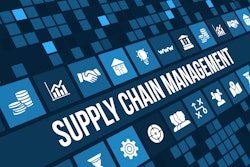
If there’s one thing supply chain and procurement leaders have learned in 2025, it’s that chaos is the new normal. Between geopolitical conflicts, natural disasters, stock market fallouts, and unprecedented tariff policies from the Trump administration, procurement teams are scrambling to put out fires left and right.
But here’s the catch: the most resilient procurement teams aren’t just reacting faster; they’re thinking smarter. And that edge? It’s being called “predictive procurement,” and it is powered by machine learning (ML) and artificial intelligence (AI).
Predictive procurement technology powered by ML and AI has shifted from an optional enhancement to a competitive necessity. These technologies are helping procurement teams shift from receiving offers and other data from suppliers to validating suggested offers using cost models, spot risks before they spiral out of control, and, when needed, make quick strategic decisions that are backed by data-driven insights.
Procurement’s new reality: Fast, complex, unforgiving
The latest round of tariffs imposed by the Trump administration— a 10% baseline on most imports and up to 25% on foreign-made vehicles—sent shockwaves around the globe and dramatically increased the immediate pressures for procurement teams to react. Companies across every industry, from automotive to consumer goods, are already feeling the impacts. Small to mid-sized businesses are especially reeling, forced to pass the bulk of the costs down to consumers, as many didn’t have the budget or resources to stockpile inventory ahead of the tariffs the same way larger enterprises did.
Even the larger companies that were able to prepare are now all hands on deck, switching to execution mode, activating backup suppliers, shifting shipping routes, and reassessing nearshoring strategies.
While tariffs are dominating the headlines right now, they are just one example of the myriad of challenges procurement professionals face, making support through predictive ML-powered technology more critical now than ever before.
Machine learning turns data into direction
Today’s procurement teams are tasked with managing massive volumes of information, from supplier data, to price fluctuations, to contract terms, and more. The list goes on. Especially now, as many companies are consolidating budgets to offset tariff costs, many procurement teams are being asked to do more work with less manpower. So, working out of spreadsheets and sifting through data manually isn’t just unrealistic, it’s essentially impossible.
ML-based technologies allow procurement teams to process all of their data at scale and identify patterns that would otherwise go unnoticed. Predictive procurement platforms, for instance, use ML and AI to forecast supplier performance and anticipate pricing shifts before they happen. And, perhaps most importantly in this current landscape, ML-powered predictive procurement platforms can help teams rapidly identify alternate suppliers based on real-time market conditions.
In the face of new tariffs, for example, procurement teams can use ML models to quickly identify which SKUs are affected, estimate the cost impact, and make a strategic recommendation on the best supplier or shipping alternatives. Historically, this process would require hours of sifting through spreadsheets and toggling between servers to collect the necessary data, but now, with the right tools and technologies in place, procurement teams can complete this task in seconds. Turning once manual tasks into an automated action frees up time for procurement professionals to tackle the important, strategic work like talking directly with suppliers to address critical business needs. That kind of efficiency and agility is no longer a matter of convenience; it’s the key to operational continuity.
Building 10-times sourcing strategies starts with price negotiations
While identifying alternative sources is an important piece of the puzzle, price negotiations are equally vital. We’ve now all seen firsthand that market conditions are changing daily. Especially for sectors like oil and gas, where one storm can upend an entire region’s supply chain, prices can literally change by the hour. Procurement teams must be supported by the technologies they need to respond quickly, not only in terms of finding new suppliers but also having the insights required to know how much they should be paying and when.
This is where ML and AI bring real firepower to the negotiation process by simulating the target outcome before the negotiation has begun. ML-powered predictive procurement platforms can analyze historical data, previous behaviors and actions, and market fluctuations to provide informed pricing recommendations in seconds and uncover opportunities for savings that would be nearly impossible to find from manual data analysis alone. For example, procurement teams can use these technologies to track how prices for a specific part shifted during the last three major hurricanes, determine whether those increases were justified or opportunistic, and use that data to inform real-time negotiations.
No one wants to be caught off guard by sudden price increases or, even worse, forced into overpaying in a last-minute scramble. With threats like hurricanes, international trade tensions, and escalating tariff rates in constant flux, staying one step ahead and making informed negotiations are essential. ML is the key ingredient to technologies that help procurement teams dynamically compare suppliers at the item level, reevaluate contract pricing against shifting cost structures, and make smarter calls about when to negotiate, when to wait, and when to switch.
Conclusion
Every industry relies on interconnected global supply chains, and disruptions in procurement have far-reaching effects across economies, making efficiency, adaptability, and resilience more critical than ever. It’s true that we cannot prepare for every possible scenario today. Yet an investment in faster response times is an investment that pays dividends in operational agility regardless of what tomorrow brings.
Ultimately, the best strategies aren’t just about finding the right material, part, item, or service; they’re about creating value by meeting needs at the right price from the right supplier at the right time. In a supply chain landscape that’s constantly throwing curveballs, adding conditions against which teams need to re-filter their options, and presenting new challenges, equipping procurement teams with every tool and technology they can use to navigate the storm will be essential for survival.




















